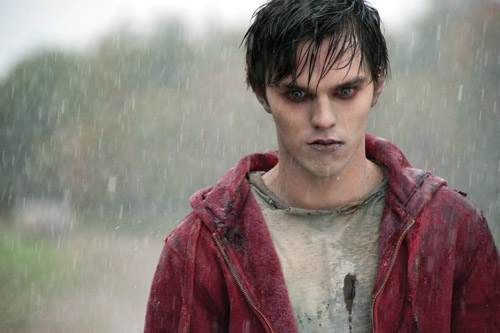People are usually polarized when it comes to zombie movies—you either love the genre or wonder why such movies exist in the first place. But “Warm Bodies” is not your typical zombie flick.
If you’re looking for a classic horror flick like George Romero’s “Night of the Living Dead,” you won’t find it in “Warm Bodies.” Director Jonathan Levine takes a bright and comedic approach to the genre by telling “Warm Bodies” from the perspective of the zombie himself. The film’s young, charming and witty zombie protagonist named R (Nicholas Hoult) searches for human connection in a way that all lonely teens can relate to, but this is a difficult feat for someone who is technically dead.
Overall, this movie is surprisingly light and humorous with well-timed wisecracks that are not overdone, so anyone looking for gory violence and tons of blood should not expect to see it in this particular zombie adaptation.
In light of the rapidly approaching Valentine’s Day, “Warm Bodies” focuses on a Romeo and Juliet-inspired love story that certainly befits the season. It is set in a post-apocalyptic world where human survivors are physically separated from zombies and believe that zombies are unfeeling and unremorseful. For the most part, zombie society is conflicted when it comes to feasting on living human beings. Although they do not speak much, or even at all, R is a different kind of zombie. Unlike the bloodthirsty Bonies—a group of skeleton-like zombies that have completely lost touch with their former human emotions and tendencies—R is one of the few left still capable of thought.
When R meets Julie, a human girl played by Teresa Palmer, he falls instantly in love with her and decides to protect her from the Bonies and other dangerous zombies. The unlikely pair gets closer and R’s feelings for her gradually make him more human while Julie’s perception of the zombie race changes because of their relationship. But Julie’s militant father is opposed to the idea of zombies being able to become more human and insists that the battle of human vs. zombie must continue. Therefore Julie and R, with the help of their likeable best friends, must find a way to change the judgments of both zombies and humans.
In the beginning of the film, there is a scene where R imagines what human life was like and how it must have been much better when people could actually communicate their feelings. There are several living, breathing beings all around him as he imagines this but none of them are communicating. Instead, all the adults weave through the crowds with their eyes cast down onto their phones and all the children are engrossed in their video games.
“Warm Bodies” makes you think about the world we are living in now—a world in which the spoken word is becoming less and less important. We might have more in common with the living dead than we would like to think.
The editor may be reached at entertainment@su-spectator.com








